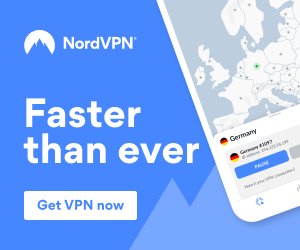The following contribution is from another author.
Key Takeaways
- Secure access is essential for safeguarding sensitive data in the era of remote work, ensuring both security and productivity.
- Zero Trust Architecture plays a fundamental role in modern secure access strategies by continuously verifying every access request and minimizing risks.
- Challenges in implementing secure access include outdated systems, user compliance issues, and the need for regular security audits.
- Best practices for securing access include regular employee training, using VPNs and firewalls, and conducting frequent security audits.
- The future of secure access technology is shaped by AI and machine learning, enhancing predictive security measures to stay ahead of developing cyber threats.
Table of Contents
- Introduction to Secure Access
- Significance of Secure Access in Remote Work
- Key Features of Modern Secure Access Solutions
- Challenges in Implementing Secure Access
- Best Practices for Seamlessly Securing Access
- The Role of Zero Trust Architecture
- Case Studies: Real-World Applications
- Future Trends in Secure Access Technology
- Conclusion: Navigating a New Era of Work
Introduction to Secure Access
In today’s dynamic digital landscape, secure access is no longer just an option; it is an imperative. As remote work environments become ubiquitous, the significance of secure access grows. With employees accessing corporate networks from diverse locales, ensuring that this access is as secure as it is seamless becomes vital. This is where the ZTNA model (Zero Trust Network Access) plays a pivotal role, advocating for rigorous security measures that don’t compromise usability.
ZTNA challenges the conventional security paradigm by presuming that no user or device, regardless of location or network, can be trusted by default. By continuously verifying each access attempt and enforcing least-privilege principles, ZTNA ensures that only authorized users and devices can access sensitive resources. Adopting a Zero Trust strategy is crucial for protecting organizational assets and preserving operational continuity as cyber threats get more complex.
Significance of Secure Access in Remote Work
The remote work revolution, accelerated by global crises and technological advances, places secure access at the forefront of business strategy. A significant 59% of employees are now engaged in some form of telecommuting, according to the Pew Research Center. This figure emphasizes a change in workplace culture and the pressing need for strong security measures that protect information without impeding efficiency. As employees access sensitive company data from potentially vulnerable home networks, the stakes for effective, secure access have never been higher.
Key Features of Modern Secure Access Solutions
The arsenal of today’s secure access solutions is both vast and sophisticated. Encryption remains a cornerstone, transforming data into complex codes decipherable only by authorized parties. These secure pathways are bolstered by multifactor authentication systems, which demand multiple forms of verification—a thumbprint, a password, or even a physical token—before access is granted. It’s also essential to raise user awareness. By warning them of phishing scams and other suspicious activity, regular training sessions and updates guarantee that staff members continue to be the first line of defense against cyber risks.
Challenges in Implementing Secure Access
Implementing secure access is fraught with its own set of challenges. Organizations often grapple with outdated legacy systems that are not compatible with modern security architectures, thus necessitating expensive and complex overhauls. User compliance also poses significant obstacles, as employees may perceive security protocols as cumbersome, leading to non-compliance. In addressing these challenges, organizations must adopt a proactive approach, which includes conducting regular security audits to identify and rectify vulnerabilities before they can be exploited by malicious entities.
Best Practices for Seamlessly Securing Access
For organizations striving to enhance secure access, following best practices is essential. Regular security training ensures that employees are vigilant and informed. Employing Virtual Private Networks (VPNs) and robust firewalls provides an added layer of protection, securing data in transit. Moreover, conducting frequent security audits helps identify vulnerabilities, allowing organizations to patch potential loopholes before they are exploited.
The Role of Zero Trust Architecture
Zero trust architecture represents a notable evolution in secure access strategies. Unlike traditional models that operate on assumed trust levels within a network, zero trust treats every access request as a potential threat. This model enforces strict verification at every stage, significantly reducing the potential for internal and external threats. Zero trust architecture is becoming more and more well-known as a successful defense against advanced cyber threats because of its “never trust, always verify” philosophy.
Case Studies: Real-World Applications
Examining real-world applications of secure access initiatives offers inspiring insights. A leading financial institution, for example, integrated advanced encryption with multifactor authentication to enhance client data protection, resulting in a noticeable reduction in breaches. Similarly, a prominent tech firm adopted the zero trust model, reporting a significant decline in security incidents. These cases demonstrate the effectiveness of well-implemented secure access protocols across various industries.
Future Trends in Secure Access Technology
As we look to the future, secure access technology promises continued innovation. With the integration of artificial intelligence (AI) and machine learning, predictive security measures are poised to become more sophisticated. According to Gartner’s IT Glossary, adaptive access control systems are set to become standard practice, catering to evolving cybersecurity threats while refining the balance between security and accessibility.
Conclusion: Navigating a New Era of Work
In summation, secure access continues to be a critical component of successful remote work strategies. As organizations adjust to this new paradigm, the emphasis on comprehensive security measures not only protects sensitive data but also fosters a reliable working environment. By embracing cutting-edge technologies and unwavering trust frameworks, businesses can guarantee a seamless transition into the future of work.
Furthermore, integrating solutions like ZTNA enables businesses to stay ahead of emerging cyber threats while maintaining the flexibility that remote work demands. The evolving nature of digital threats calls for continuous adaptation and the adoption of security frameworks that are both proactive and adaptive. Ultimately, a robust security strategy will empower organizations to confidently navigate the challenges of an increasingly connected and decentralized workforce.
















